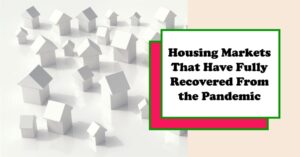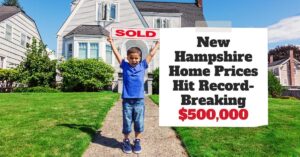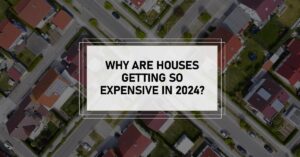Last year, the Biden-Harris administration unveiled a groundbreaking plan to tackle the dual challenges of soaring office vacancies and a severe shortage of affordable housing. With the nationwide office vacancy rate hitting a 30-year high of 18.2% in Q2 of this year, the administration aims to repurpose these commercial properties into residential units to address the housing crisis.
According to CBRE, the high office vacancy rate poses a significant strain on commercial real estate and local economies. Simultaneously, the U.S. is grappling with a staggering deficit of 3.8 million housing units, as estimated by Freddie Mac. The National Low Income Housing Coalition highlights an alarming shortage of 7.3 million affordable rental homes, exacerbating the housing affordability crisis.
Biden Administration's Bold Move for Affordable Housing Plan
The administration's plan involves providing federal funding, low-cost financing, and guidance to support the conversion of high-vacancy commercial buildings into residential use. This initiative aims to create housing that is not only affordable but also energy-efficient, near transit, and close to job opportunities, contributing to a reduction in greenhouse gas emissions.
Key Actions Announced
Today, the Biden-Harris Administration announced several actions to spur the conversion of commercial properties into residential units:
- Sparking Investment through New Federal Funding and Repurposing Property
- Department of Transportation (DOT) guidance on utilizing TIFIA and RRIF programs for housing development near transportation.
- HUD's updated notice on using the Community Development Block Grant fund for commercial to residential conversions.
- General Services Administration (GSA) expanding the Good Neighbor Program to promote the sale of surplus federal properties for residential redevelopment.
- Leveraging Federal Funding to Encourage Conversions
- A Commercial to Residential Federal Resources Guidebook featuring over 20 federal programs supporting conversions.
- Training workshops for stakeholders on utilizing federal programs for commercial to residential conversions.
- Technical assistance from DOT and DOE to support municipalities and developers.
- Working with States, Localities, and the Private Sector to Take Action
- NACo's expansion of efforts to support county capacity for commercial to residential conversions.
- The American Planning Association's collaboration for new programs on commercial to residential conversions.
The Economic Impact
Beyond addressing the immediate housing crisis, the administration's plan has broader economic implications. By repurposing vacant commercial properties, local economies stand to benefit from increased activity in construction, real estate, and related industries. Moreover, the initiative aligns with the White House's Housing Supply Action Plan, which aims to lower housing costs and promote fair housing practices.
Sustainable Development and Climate Considerations
One notable aspect of the plan is its emphasis on sustainable development. The Biden-Harris Administration recognizes the importance of building energy-efficient homes near transit hubs, reducing the carbon footprint associated with transportation. The Department of Transportation's guidance aligns with principles for pursuing transportation projects that simultaneously increase affordable housing supply and decrease emissions.
Empowering Local Initiatives
Recognizing the role of states and localities, the administration encourages entities to identify public tools and land disposition opportunities for facilitating conversions. Efforts by organizations like the National Association of Counties (NACo) and the American Planning Association further empower local governments to actively pursue commercial to residential conversion projects.
Training and Guidance for Stakeholders
The release of a Commercial to Residential Federal Resources Guidebook, along with planned training workshops, signifies a commitment to providing stakeholders with the knowledge and tools necessary for successful conversions. This comprehensive approach aims to streamline the conversion process and maximize the impact of federal programs.
Will Govt's Move Improve Housing Affordability?
While the Biden Administration's plan is a crucial step toward addressing the housing crisis, its impact on affordability depends on various factors. The provision of federal funding, low-cost financing, and technical assistance creates a favorable environment for converting commercial properties into residential units. This can potentially increase the housing supply, especially in urban areas where office vacancies are high.
However, challenges persist, and the scale of the housing shortage requires multifaceted solutions. The success of the initiative will depend on effective implementation, collaboration with local entities, and ongoing efforts to streamline the conversion process. Additionally, addressing zoning regulations and other barriers will be essential to ensure the affordability and accessibility of the newly repurposed residential units.











